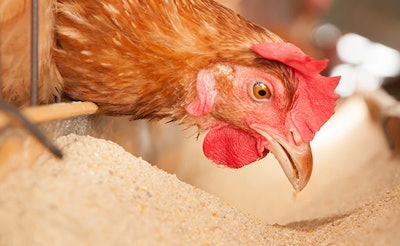
Even though US poultry producers have made great strides in reducing the occurrence of Salmonella, nearly 25% of those illnesses are still linked to poultry products. In response, USDA has made reducing Salmonella infection a top priority and is rethinking its approach to managing the ubiquitous foodborne pathogen, which occurs naturally in poultry. Poultry Health Today talked with Salmonella experts about preparing for the changes ahead.
Brand Insights from Poultry Health Today
For a free subscription to Poultry Health Today’s weekly newsletter, click here. You can also follow us on LinkedIn.
USDA evaluating Salmonella-reduction steps along poultry supply chain
Poultry product contamination with Salmonella has been “reduced pretty significantly” over the past 20-plus years, but “there’s no meaningful reduction in [foodborne] illnesses,” Sandra Eskin, USDA’s deputy undersecretary for food safety, told Poultry Health Today. “It is our responsibility to make sure that companies, producers, and processors are doing everything they can to limit contamination,” she added. “Our focus is the condition of the bird when it enters the slaughterhouse. So, everything that comes before that is relevant.”
Read more at poultryhealthtoday.com
Too few aware of FSIS guidelines about live Salmonella vaccines
Vaccination is a valuable tool for reducing the flow of Salmonella from live production, where the pathogen begins, to the processing plant, where USDA tests for it. The problem is that some Salmonella vaccines for broilers can persist in the bird and lead to false but still potentially costly positives. “It’s a conundrum because vaccination against Salmonella is key to controlling the pathogen,” said Douglas L. Fulnechek, senior public health veterinarian, Zoetis, in a recent article. Fortunately, there’s a simple solution.
Read more at poultryhealthtoday.com
Roundtable: Coming together for food safety
Many poultry companies are still struggling to reduce the prevalence of Salmonella — not only to protect public health and produce a wholesome product but also to avoid the USDA’s Food Safety and Inspection Service’s Category 3 designation, which can compromise a company’s reputation as a dependable supplier. Processing plants can no longer be expected to bear sole responsibility for controlling Salmonella. Representatives from live production, processing, quality assurance, and food safety shared ideas for taking an integrated, company-wide approach to managing Salmonella.
Read more at poultryhealthtoday.com
Salmonella serotypes are changing — monitor which ones are in your flock
It’s imperative for poultry producers to know what strains of Salmonella serotypes may be circulating in their flocks, said Chuck Hofacre, DVM, Ph.D., Southern Poultry Research Group in Georgia. “As Salmonellas on farms change, different Salmonellas will start to come into our processing plants,” he noted. “If they’re of human-health concern and…show up on the final product, then we’re going to have to change how we monitor and how we test our breeder and broiler flocks.” He encourages producers to test their farms to understand which Salmonella serovars are in their broilers and/or breeders.
Read more at poultryhealthtoday.com
Chance of Salmonella vaccine positives at processing ‘zero’ with unique vaccine
Despite being used for years at poultry operations throughout the US, a live vaccine developed by Zoetis has never been recovered from samples taken by USDA’s Food Safety and Inspection Service. Furthermore, following an exhaustive analysis of all isolates FSIS submitted to the National Center for Biotechnology Information database, scientists could not find any with genetic similarity to the vaccine. In one of the many trials conducted with the vaccine, Poulvac ST, vaccinated flocks were up to three times less likely to test positive for Salmonella compared to unvaccinated flocks. Vaccinated birds also had a higher average daily gain and better adjusted feed conversion.
Read more at poultryhealthtoday.com
